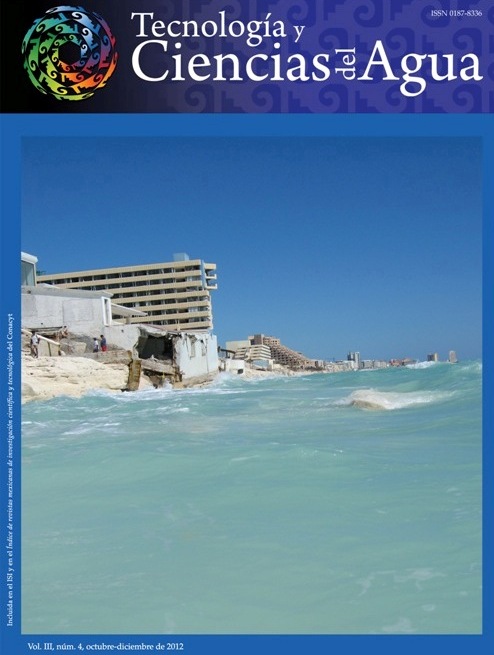The screen or shadow effect of trees on urban runoff
Keywords:
screen effect, interception, urban hydrology, urban runoffAbstract
The functioning of the urban forest depends on the intensity and angle of the precipitation, the interceptor capacity, wind speed and direction, and the spatial location of trees. The screen effect of urban vegetation is a determinant of the generation of urban runoff, the efficiency of the drainage system and the levels of contamination caused by the contaminants on the streets. This work investigates the screen or shadow effect on urban runoff based on an isolated tree of the species Ficus benjamina. The interceptor flow was based on the system developed by Guevara-Escobar et al. (2006), built with transparent plastic. In this case, the plastic was substituted by transparent polycarbonate in order to reduce the losses produced by the wind force and turbulence. The accumulated volume for the 88 events was 21.36 m3 (with no tree). Taking into account the loss from interception, this was reduced to 6.97 m3, a difference of 14.39 m3. The calculated cost of precipitation (Pg) was 30.51 m3s-1, which was reduced to 8.49 m3s-1 when taking into account loss from interception. The distance of the screen effect was found to be 4.43 m, according to the ratio proposed by David et al. (2006), the morphological characteristics of the Ficus benjamina species and its architecture. The difference between the cost produced and net precipitation Pn was 22.01 m3s-1. The results show that the functioning of the urban forest as a control-obstruction structure and its benefit to urban runoff depends on its spatial location in the urban zone.Downloads
Published
How to Cite
Issue
Section
License

This work is licensed under a Creative Commons Attribution-NonCommercial-ShareAlike 4.0 International License.
By Instituto Mexicano de Tecnología del Agua is distributed under a Creative Commons Attribution-NonCommercial-ShareAlike 4.0 International License. Based on a work at https://www.revistatyca.org.mx/. Permissions beyond what is covered by this license can be found in Editorial Policy.









